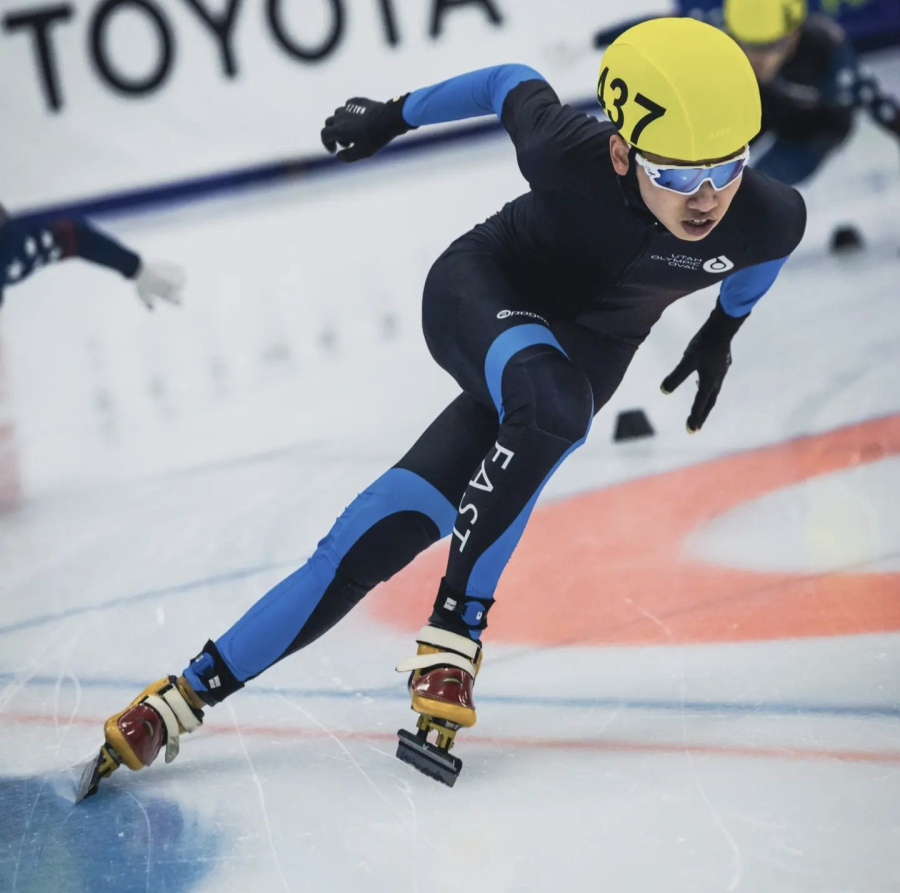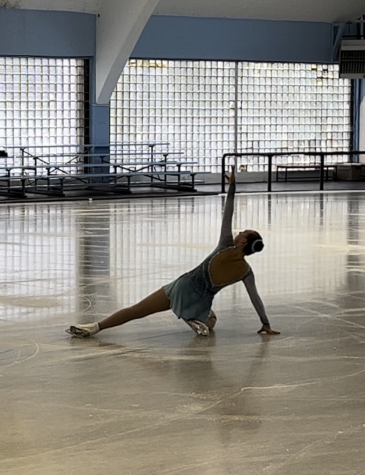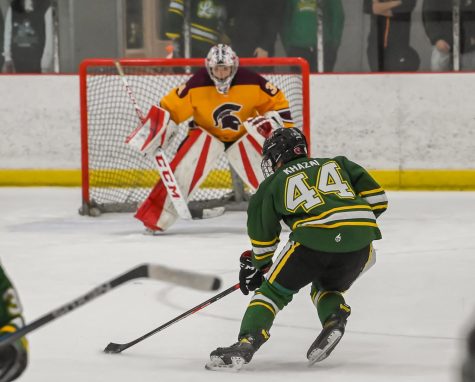The Ice Sports and How They Differ
Key differences between hockey, figure skating, and speed skating
The winter season comes with ice skating, a tradition for many people to do during these chilly times, however, there is more than one sport that stems from the same block of ice. There are typically two different groups of people on a free skate day on a rink. One group is the people in the middle of the rink doing very complex and impressive tricks, or a boy speeding past with rapid speed, while the others are the ones still holding onto the rink bar.
Those people didn’t magically become that skilled overnight, but rather through hard work. Junior Elle Werner is a figure skater who has been skating since she was two. Her training usually starts from the early hours of the day.
“I’m not super intense about it. I usually wake up at around 4:30 to 5:00 and skate for an hour in the morning, and then go to school, and sometimes depending on the day I’ll go after school for an hour or two,” Werner said.
This routine accounts for about half the week for her. Junior speed skater Sean Shaui has a similar schedule to Werner, with an early start as well.
“I’d start at 4:00 in the morning with an early ice session for two hours, and then go to school. After school, I’d have another ice session for one hour along with weight lifting, biking, or running to help condition my body,” Shuai said.
Skaters’ practice is all preparation for the games and races they compete in. Hockey, figure skating, and speed skating all have seasons in the winter. However, figure skating also has competitions in different seasons, depending on the level.
“The season starts in May or June to September or October if you are not international. If you are, the season starts in October [and lasts] until February,” Werner said.
Ice sports also have a difference in equipment. Their key difference is their skates.
“The biggest difference is the blade, figure skates are wider, we also have toe picks so we can jump off the toe [and] more ankle support in the boot,” Werner said.
Speed skates differ in the fact that they have a much longer blade and a stiffer boot. Senior Kameron Khazai said that the biggest difference for hockey was the fact that hockey players must be padded head to toe, which is unique to the sport. Khazai also shed some light on some of the few misconceptions about hockey.
“One misconception about hockey is that you have to be tall in order to be good. There are many advantages to being tall in hockey, but that doesn’t mean if you’re not tall you can’t be good at hockey, as there are many small players in the NHL,” Khazai said.
A common physique misconception about figure skaters is that they are always skinny. However, there is certainly significant muscle being used in figure skating.
“[Many] compare [figure skating] to ballet a lot, but it is definitely a bit more cardio intense,” Werner said.
Shuai also cleared up some possible confusions about his type of skating. He has been mistaken for doing one type of speed skating, when he actually does the other.
“Most people assume I do long track speedskating. There is a very large difference between long track and short track. Long track is just like swimming, racing by time, but not really directly competing with each other for positions” said Shuai.
Overall, the three sports are all very different but also have many similarities.




